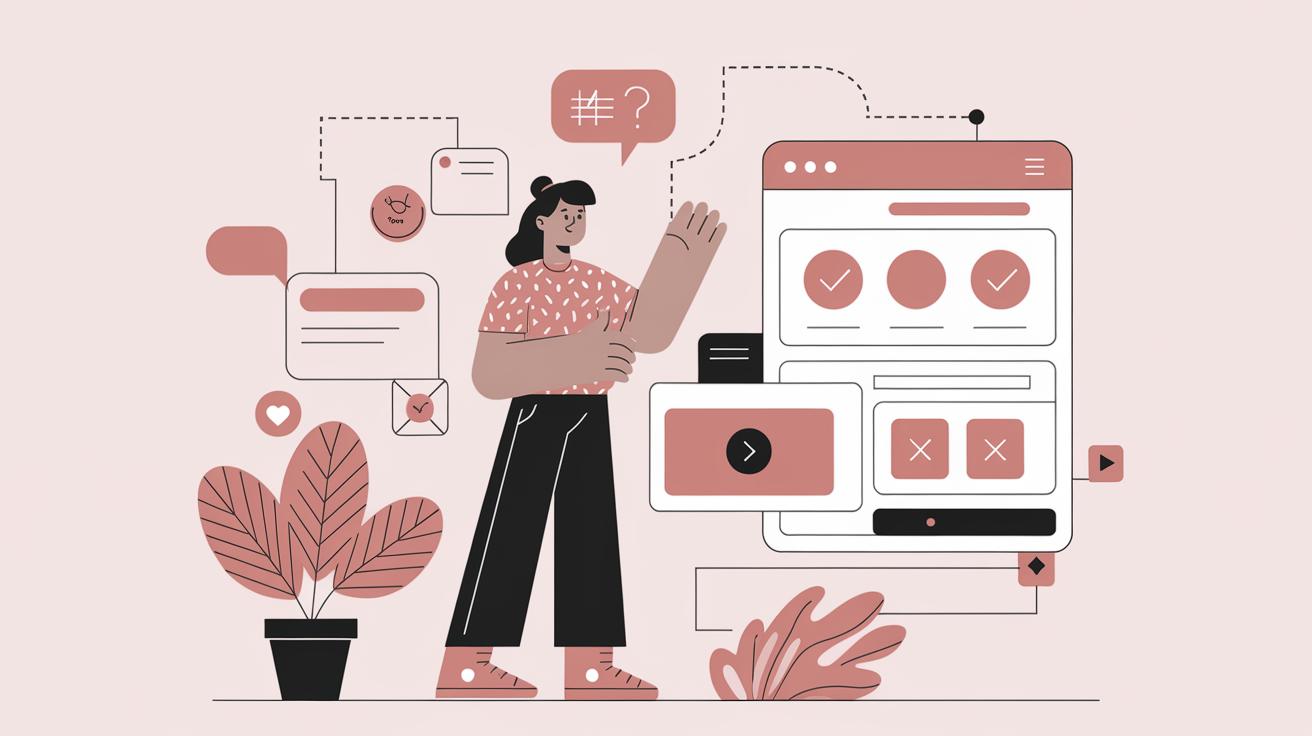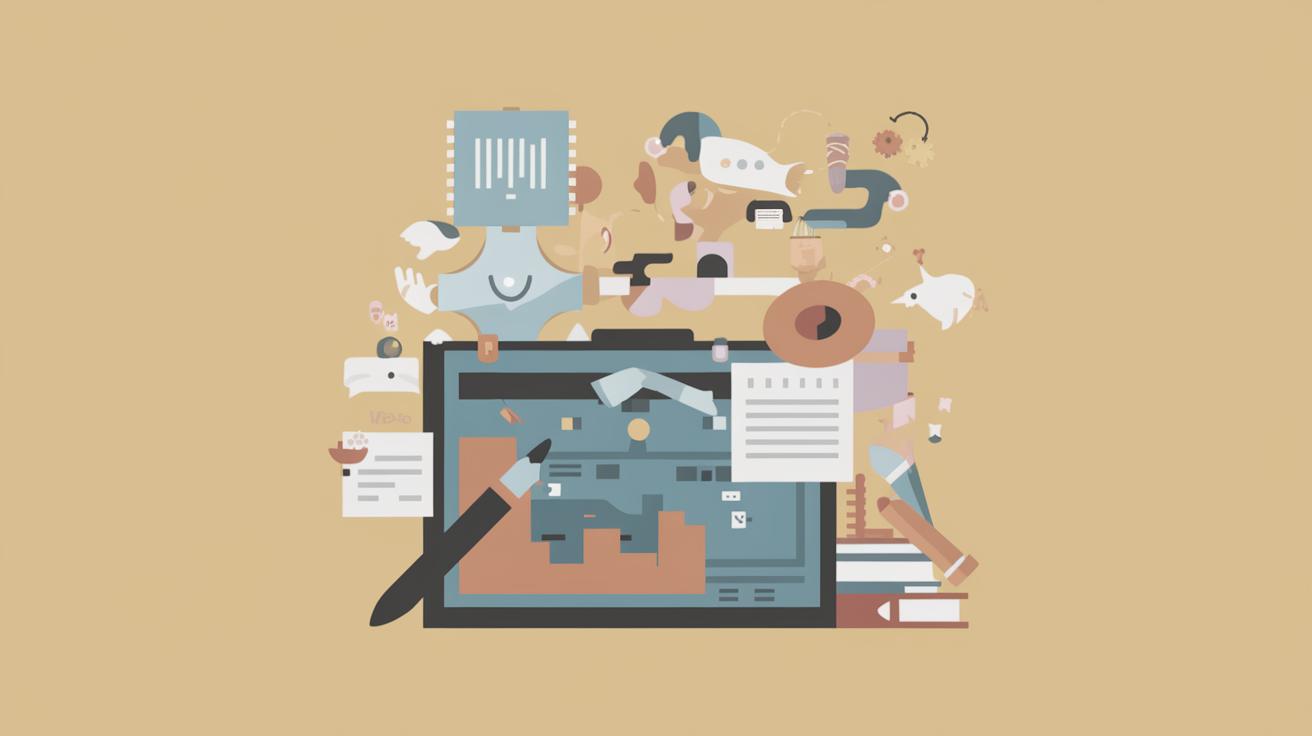Understanding the Differences Between UI and UX Design
When it comes to crafting digital products, the terms UX (User Experience) and UI (User Interface) design often come up. While they are distinct fields, they’re inherently connected, often overlapping in practice. This blog aims to delve into the differences between UX and UI design, examining the roles, tasks, and responsibilities associated with each. We’ll look at how these concepts work together, explore career opportunities, and address frequently asked questions. Ultimately, by examining these aspects, you’ll gain a clearer understanding of whether a career in UX or UI design—or both—is right for you.
1. UX vs. UI Design
What is user experience (UX) design?
User Experience (UX) design is the process that design teams employ to create products offering meaningful and relevant experiences to users. It’s about enhancing user satisfaction by improving the usability, accessibility, and pleasure provided in the interaction between the user and the product. UX design is comprehensive, covering the entire process from product discovery and development to branding and marketing.
UX design considers the entire journey a user takes when interacting with a product or service. It’s more than just creating a usable product; it’s about crafting an experience that resonates with users on a functional and emotional level. This involves understanding user behavior, conducting research, and testing designs to ensure seamless, user-friendly experiences.
What does a UX designer do? Tasks and responsibilities
UX designers are responsible for ensuring that end-users have the best possible experience with a product. Their day-to-day tasks include conducting user research through interviews and surveys, creating persona profiles to identify target users, and building wireframes and prototypes for testing. They often collaborate with stakeholders to iterate designs based on feedback and data.
Designers in this field must possess strong analytical skills to assess user requirements accurately and translate those needs into intuitive product designs. Tasks can also include user testing to validate the usability of a product, ensuring that the final output meets both user expectations and business goals.
What is user interface (UI) design?
User Interface (UI) design focuses on the look and layout of a digital product. It defines the interface’s visual elements, such as buttons, icons, spacing, typography, and color schemes. Essentially, UI design is the bridge that visually connects users with the functionality of a product, making it usable and enjoyable.
UI designers aim to create interfaces that users find easy to use and pleasurable. They consider the way users would perceive and interact with the product’s interface, ensuring aesthetic consistency and clarity. The importance of visual design cannot be underestimated, as it greatly influences user engagement and satisfaction.
What does a UI designer do? Tasks and responsibilities
UI designers focus on enhancing the interactivity and visual touchpoints of a product. Their tasks include designing interactive interfaces, refining user journeys, and making visually appealing components that make an application accessible yet attractive. They also work on the responsive adaptation of design elements to ensure consistency across various devices and screen sizes.
Being detail-oriented is crucial in this role, as minute adjustments to design elements can significantly impact the user’s interaction. They often work with style guides to maintain brand coherence and collaborate closely with UX designers and developers to bring life to the meticulously designed wireframes through final product interfaces.
2. Understanding the Key Differences Between UX and UI Design
The main difference between UX and UI design is that UX design encompasses all aspects of a user’s interaction with a product, while UI design is specifically about how the product’s surfaces look and function. UX focuses on the overall feel of the experience, whereas UI ensures the product’s appearance reflects that experience.
UX design is more analytical and focuses on understanding users’ needs through research and testing, while UI design is more graphic and incorporates the artistic aspects of product design. Both work towards the same goal of creating a satisfying user experience but approach the task from different sides—one is concerned with how users feel, the other with how things look and function.
3. How Do UX and UI Design Work Together?
Despite their differences, UX and UI design are intertwined, working hand-in-hand to create comprehensive, seamless user experiences. The UX process often lays the groundwork by understanding user journeys and defining the flow of the application. Following this, the UI process builds on this foundation by creating visual elements that map those journeys into an engaging interface.
Effective digital products require collaboration between UX and UI designers to ensure that both function and aesthetics come together cohesively. UX designers determine the pathways users will take while interacting with an app, and UI designers apply visual design principles to these pathways, ensuring usability and delight.
Why do companies often advertise UX/UI roles as one?
Many companies advertise combined UX/UI roles to capitalize on the synergy of both skill sets. Combining these roles allows designers to have a holistic understanding of products from conceptualization to design. This is particularly beneficial in start-ups or smaller companies where resources may be limited.
While the roles can overlap, hiring a designer proficient in UX and UI offers efficiency in designing and implementing a product, streamlining communication and reducing turnaround time. This combined role also allows for a cohesive design process, ensuring consistency across the user journey.
4. Should You Become a UX Designer or a UI Designer?
UX vs. UI: The Main Skills Required for Each
While both UX and UI designers require a keen understanding of design principles, their focus areas differ. UX designers need strong research skills, empathy, and an ability to visualize abstract data, prioritizing the overall user journey. Critical thinking and problem-solving are key skills, as is the ability to synthesize user feedback into actionable design decisions.
On the other hand, UI designers require a flair for aesthetics, an understanding of typography and color theory, and skills in design software like Adobe XD or Sketch. Precision, attention to detail, and creativity are essential, as UI design translates user experiences into visually compelling interface elements.
UX vs. UI Salary
When considering a career in design, potential salary is a significant factor. Generally speaking, UX and UI designers tend to earn comparably depending on the region, experience, and specific industry. However, UX designers might command higher salaries in areas where user research is highly valued and large data sets are common.
Salaries for UX designers can range slightly higher due to the complexity involved in research methodologies and the analytical skills required. UI designers’ earnings are based on their ability to create compelling interfaces, and those proficient in both areas are often highly valued, potentially leading to higher compensation packages.
Choosing Between UX and UI
Choosing between a career in UX or UI design largely depends on your interests and skill sets. If you have a knack for analyzing behavioral patterns, conducting research, and solving complex problems, a UX role might be more fulfilling. It involves understanding users’ needs and improving their overall journey with a product.
Conversely, if you’re more visually inclined and enjoy crafting aesthetically pleasing layouts, UI design could be the path for you. Your role would primarily focus on the presentation and interactivity of digital product interfaces. Ultimately, understanding your strengths and preferences will guide you toward the right career choice.
Becoming a UI/UX Designer
Whether you decide to specialize in UX, UI, or both, continuous learning and practical experience are paramount. Aspiring designers often start with foundational courses, boot camps, and hands-on projects to build their portfolios. Working on internships or freelance projects can provide real-world experience that is invaluable when starting.
Cultivating a strong network and staying updated with industry trends will also support career advancement. Leveraging platforms like LinkedIn or attending design meetups and conferences can open doors to new opportunities and insights into the evolving landscape of digital design.
5. Key Takeaways
Understanding the nuances between UX and UI design helps clarify their distinct yet complementary roles in digital product creation. UX focuses on user satisfaction through research and strategy, while UI centers on visual aesthetics and interface interactivity. Both are integral to delivering coherent and engaging digital experiences.
Whether you are gravitating towards UX or UI depends on where your strengths and interests lie. With dedication and the right skillset, you can create meaningful, visually appealing user experiences that meet user needs and business goals.
6. UX vs. UI FAQs
What are the key differences between UX and UI design?
UX design is concerned with user satisfaction and experience, emphasizing usability and function, while UI design is focused on the aesthetics and interactive elements of a product. Together, they create a cohesive user experience from conceptualization to final execution.
Is it better to be a UX or UI designer?
Whether it’s better to become a UX or a UI designer depends on your personal interests and skills. If you excel in research, strategy, and user behavior analysis, UX design might be more suitable. If you have a strong sense of visual aesthetics and creativity, UI design could be the better path.
Who earns more, UI or UX designers?
Salaries can vary based on location, experience, and industry. Generally, both UI and UX designers earn competitive wages, although UX design roles that demand extensive research skills may offer higher salaries in certain markets.
What You Should Do Now
If you’re contemplating a career in UX or UI design, consider evaluating educational resources, online courses, and design boot camps that offer specialized training. Start building a portfolio that showcases your skills and highlights your understanding of user-centric design principles.
Summary of Main Points
| Aspect | UX Design | UI Design |
|---|---|---|
| Focus | User satisfaction and experience improvement | Visual aesthetics and interface interactivity |
| Skills Required | Research, Analysis, Empathy, Problem-solving | Creativity, Attention to Detail, Visual Design Skills |
| Roles and Responsibilities | User Research, Journey Mapping, Prototyping | Designing Layouts, Interface Design, Branding Consistency |
| Career Considerations | Analysis and Strategy Focused | Creativity and Visual Design Focused |


